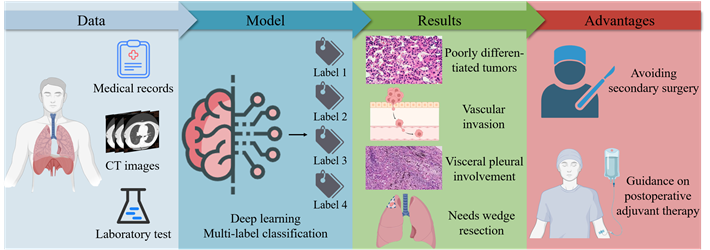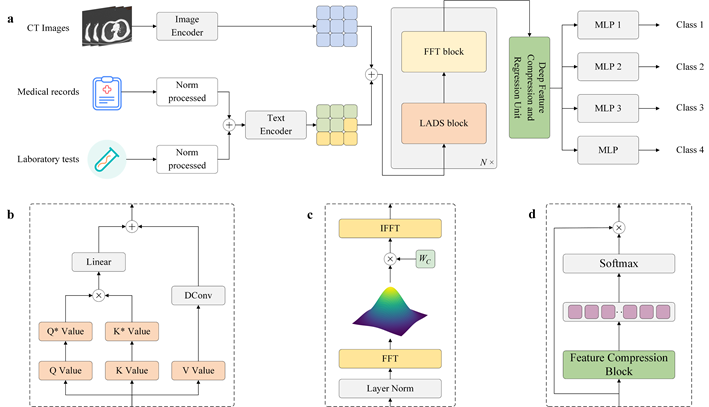Lung cancer, one of the leading causes of cancer-related deaths globally, poses a critical challenge where early diagnosis is key to improving survival rates. However, some early-stage lung cancer patients, affected by high-risk factors such as poorly differentiated tumors, vascular invasion, visceral pleural invasion, and unclear lymph node status, still face secondary surgery or postoperative adjuvant therapy. Accurate preoperative identification of these high-risk factors relies on pathological diagnostic results. In the absence of pathological data, the assessment process involves extensive interdisciplinary collaboration, complex preoperative factors, and challenging decision-making, leading to significant discrepancies between preoperative analysis and the postoperative gold standard. This creates a serious challenge for precise diagnosis and treatment of early-stage lung cancer. To address this, this project aims to integrate multimodal data for the diagnosis of high-risk factors in early-stage lung cancer. A novel multimodal feature fusion method based on linear dual-regression attention and fast Fourier transform is proposed. This method can extract important features relevant to high-risk factor prediction from multimodal data. Innovatively, a hyperbolic tangent activation function gating mechanism is introduced for feature selection and optimization, enhancing the model's performance and stability. The results show that the proposed model achieves high accuracy in diagnosing high-risk factors for lung cancer, with a classification accuracy of 92.4%. This achievement offers new technical support for the diagnosis of high-risk factors in early-stage lung cancer and holds broad prospects for clinical application.

